Do you struggle to find your food photography style?
One day you’re all about dark and moody, the next day hard light is your game. Or maybe you’ve used a lot of props to create a strong sense of narrative in your photos, only to find that minimalism and really focusing on the food is what really resonates with you.
Whether it’s in photography, fashion, decor, or art, style is something the is ever-evolving. Tastes mature and change, and what attracts us at one time may no longer be appealing at another.
Our style can also be heavily influenced by trends and what we observe our peers doing, and those whose work we are inspired by.
The interesting thing about style, is that the root of it is there from the beginning. It slowly blossoms as you hone your craft, eventually flourishing in a style that is so identifiable to you that others can recognize your food photography at a glance,
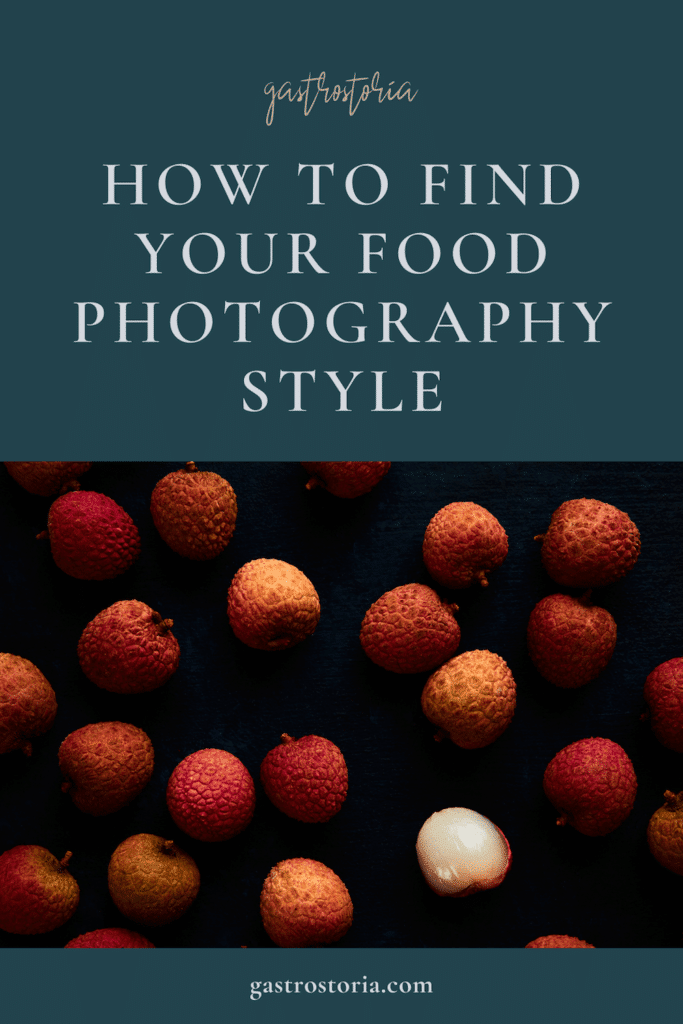
A friend of mine has been shooting portraiture for over twenty years. I knew her before she ever picked up a camera, so I was witness to those beginning forays into film. Although those first captures showed promise, they were raw and rather clumsy. The quality of her work has, of course, matured–but if you’d look closely at those old photos, you’d see the seedlings of the photographic style she is known for. The warm backlight, the low contrast, the subtle, monochromatic hues no matter the subject.
Keep in mind that when I talk about style, I’m referring to more than adjectives like “dark and “moody” or “light and airy”. These are certainly “styles of photography”, but your photographic style is composed of much more than these concepts.
In addition, your food photography style includes the way you frame your scene and place the various elements within it, your approach to propping and post-processing, as well as how you manipulate light and so many other details.
In fact, I would go as far as saying your photographic style is a reflection of how you see the world.
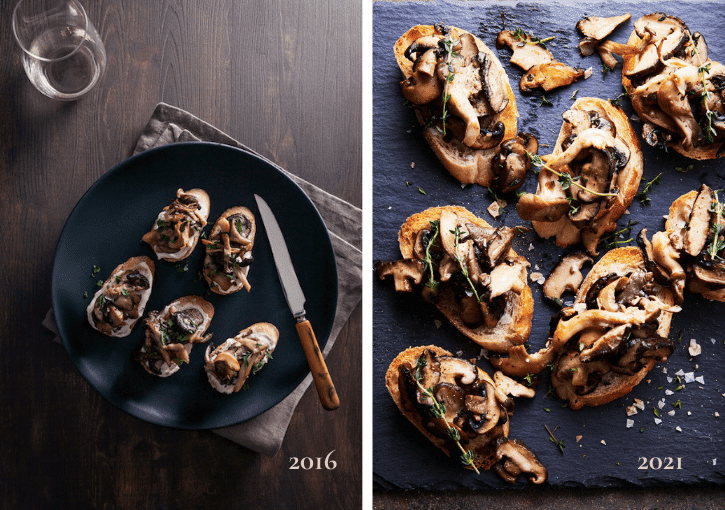
Look Back at Your Body of Work
Even if you’re a beginner, look back at your body of work with a analytical and subjective eye. Study the first images you posted on Instagram or your blog. The first food shots you took with your phone or new DSLR.
What do you see?
First of all, was there a style that you were trying to emulate or take cues from? How did you attempt to translate that inspiration into your images?
When I first started shooting food in 2009, it was as a food writer. I photographed the recipes I made for my blog and for the articles I wrote for magazines and online sites. I shot a lot of food close up because I didn’t have many backdrops or prop, and my photographs had a lot of contrast.
Not long after that, I became heavily influenced by the work of photographer Katie Quinn Davies of What Katie Ate, as were so many other food bloggers at the time. I tried to emulate her moody, rustic style that told the story of food eaten at a farmhouse table while the late summer sun spilled into through the window.
No matter how hard I tried, I couldn’t get my work to look like that, and I found the layered styling and composing of so many visual elements an exercise in frustration. If felt like trying on someone else’s clothes. No matter how much you admire them on the other person, they don’t quite fit, and somehow they just don’t look right on you. The images were awful and didn’t reflect my true abilities at the time, which were more obvious in the images I created when I just let myself get carried away by my instincts.
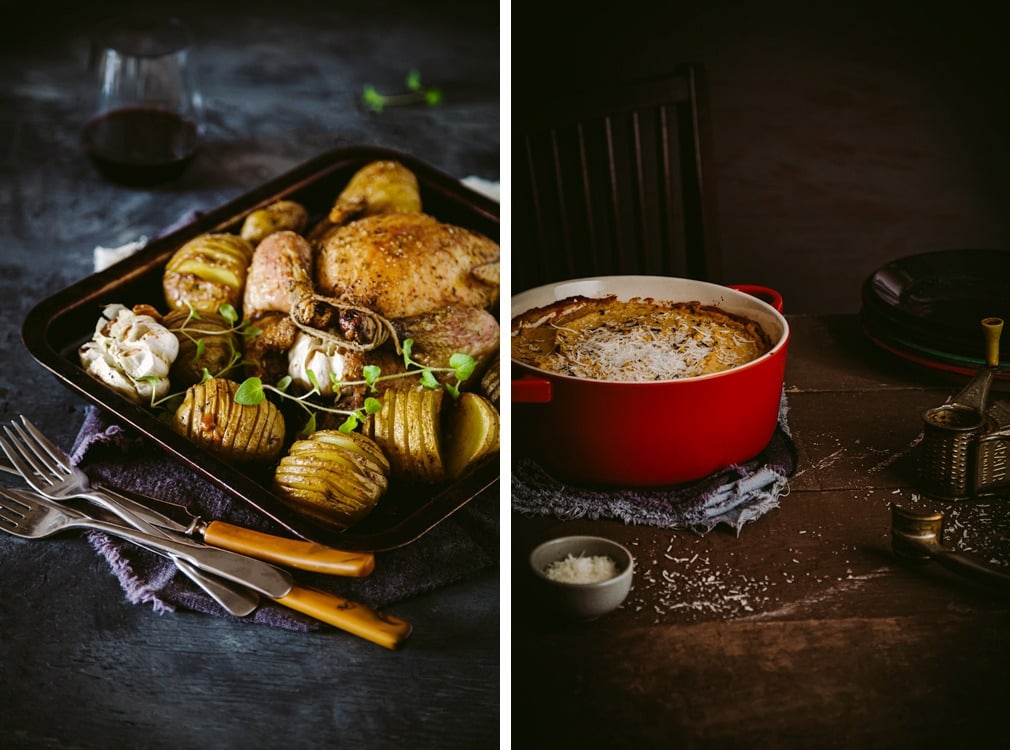
However, through the process I discovered what I liked and didn’t like, and what resonated with me and what did not. I realized that I loved playing with shadows and creating a tangible sense of mood in a photo. I found that although I love food photos with a distinct sense of time and place, I’m more of a minimalist at heart.
Although I actually have a lot of stuff–books, props, papers, gear–I like it all hidden away so I can’t see it. I’m not a fan of visual clutter. This translates into my photography as well.
This is what I find so fascinating about making art. It truly does express who we are.
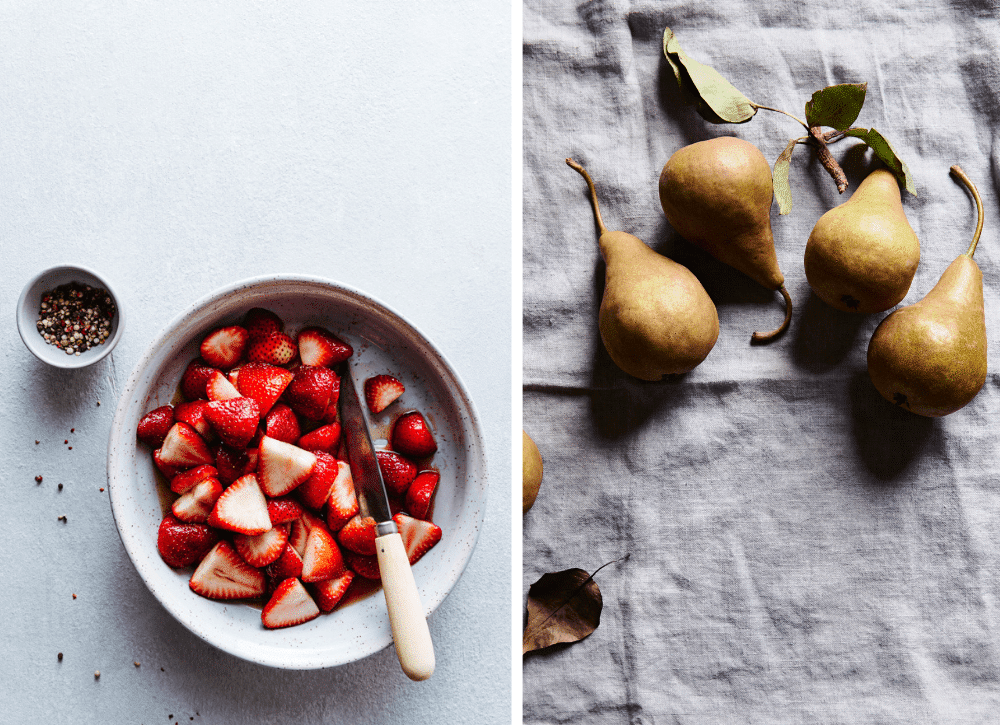
When I look at my current work, I can see the elements that were there from the beginning: a minimalist approach, high contrast, moody shadows, and light as an important visual element. The light is something you notice in my food photography.
Learn by Copying–to a Point
I’m not someone who is very disturbed by copying. I know many photographers are.
I have seen images on Pinterest that were a blatant copy of a shot of mine, from the colour of the dishes down to the placement of the garnish. It doesn’t annoy me as much as it makes me feel a bit sorry for the photographer who lacks this much confidence to show up for their art.
Copying is not fair to the photographer who is being copied, but in some ways I understand where the need to copy comes from. It stems from inexperience, but also from a lack of self-trust.
Ultimately copying is a bad idea, not only because it’s unfair, but also because it will hold you back a great deal in your food photography journey.
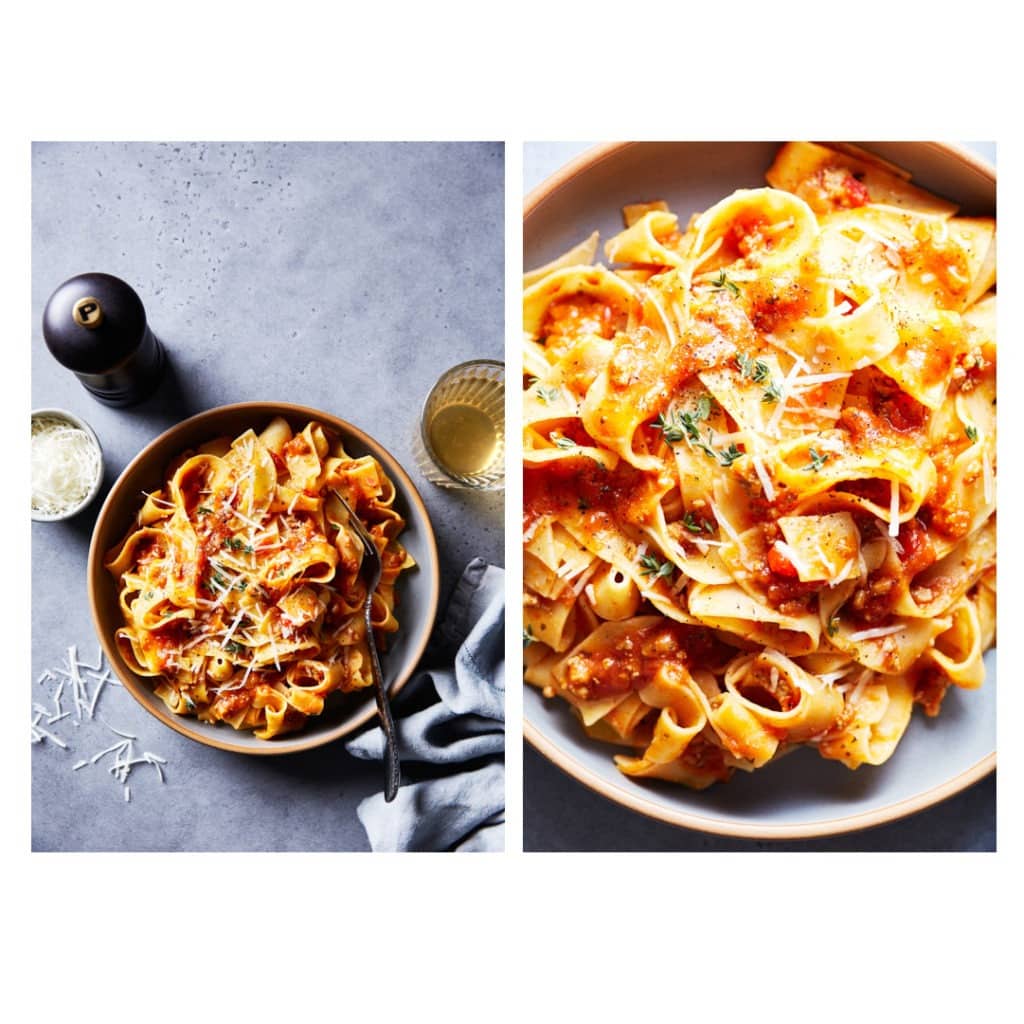
I have a Master’s degree in Creative Writing. I’ve been writing stories ever since I can remember. When I was writing my first novel as a teenager, I was obsessed with The Catcher in the Rye. Everything I wrote sounded like a bad imitation of JD Salinger. After that it was a bad imitation of Hemingway, or Virginia Woolf, or whichever author I happened to be reading.
I learned to write by copying. I internalized the rhythm of language expressed well. It helped me find my own style that was slowly beginning to bloom. Sooner or later, allowing myself to be so influenced by the voices of others stifled my own voice, and the same happens in photography or any other art form.
Pondering this is what led me to create food photography templates when I wrote my first ebook about composition, and then the image overlays for tethered capture the following year. The templates are food photography set-ups that you can copy, that will guide you in placing your subject and props in a way that follows the rules of composition but are so simple that the possibilities are endless and your photos are not in danger of looking exactly like someone else.
Bottom line about copying is use reference photos as a learning tool at the beginning. Don’t share them with the world, but use them as a part of the process to become a better food photographer.
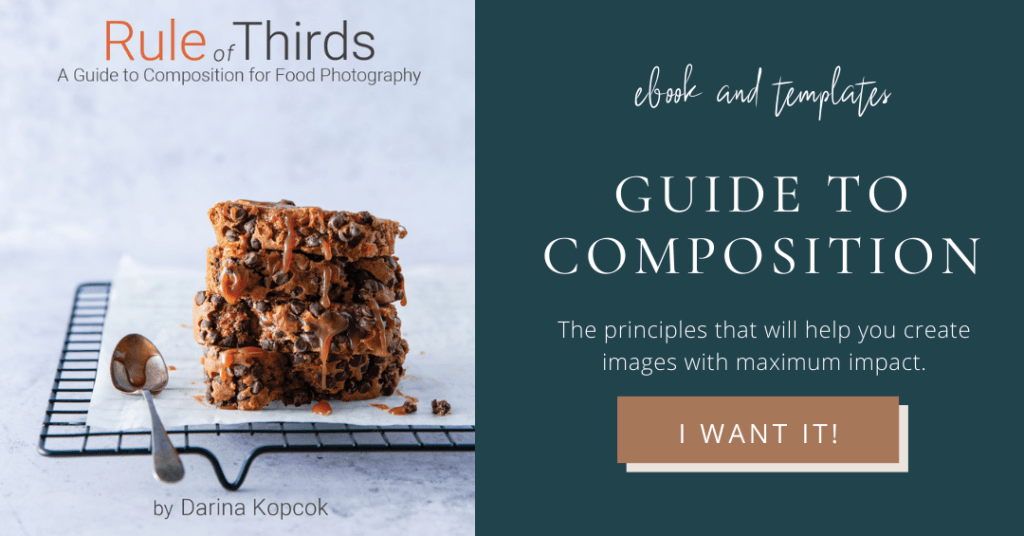
Study the Elements in Photos that Inspire You
Take some to reflect on your images. Write your thoughts down. What are the consistent elements you see in your work in terms of the lighting, the composition and styling, the way you edit your photos? Are there photographers that inspire you in your own work, and if so, what is it about their photos that move you?
You gravitate to certain styles of photography, art, clothes etc because there are elements there that resonate with you. In fact, there might be photographers whose work you love, but their images look nothing like yours. But I’m guessing if you look closely, there are elements that speak to you that show up in your own photos.
When I look at the work of my favourite food photographers, their work is nothing like mine. The light looks very natural, the colours are more subdued, and the images overall are light and airy. However, the moody shadows are there, the composition is minimalistic and rustic, vintage touches like natural fabrics and antique cutlery are ever present.
As a commercial photographer, I have to shoot what my clients want, even when I think what they want is ugly and so far from my style that I wonder why they hired me. But when shooting for my portfolio, premium stock agencies, or personal work, there are certain elements that can be found consistently.
This is what makes up photographic style.
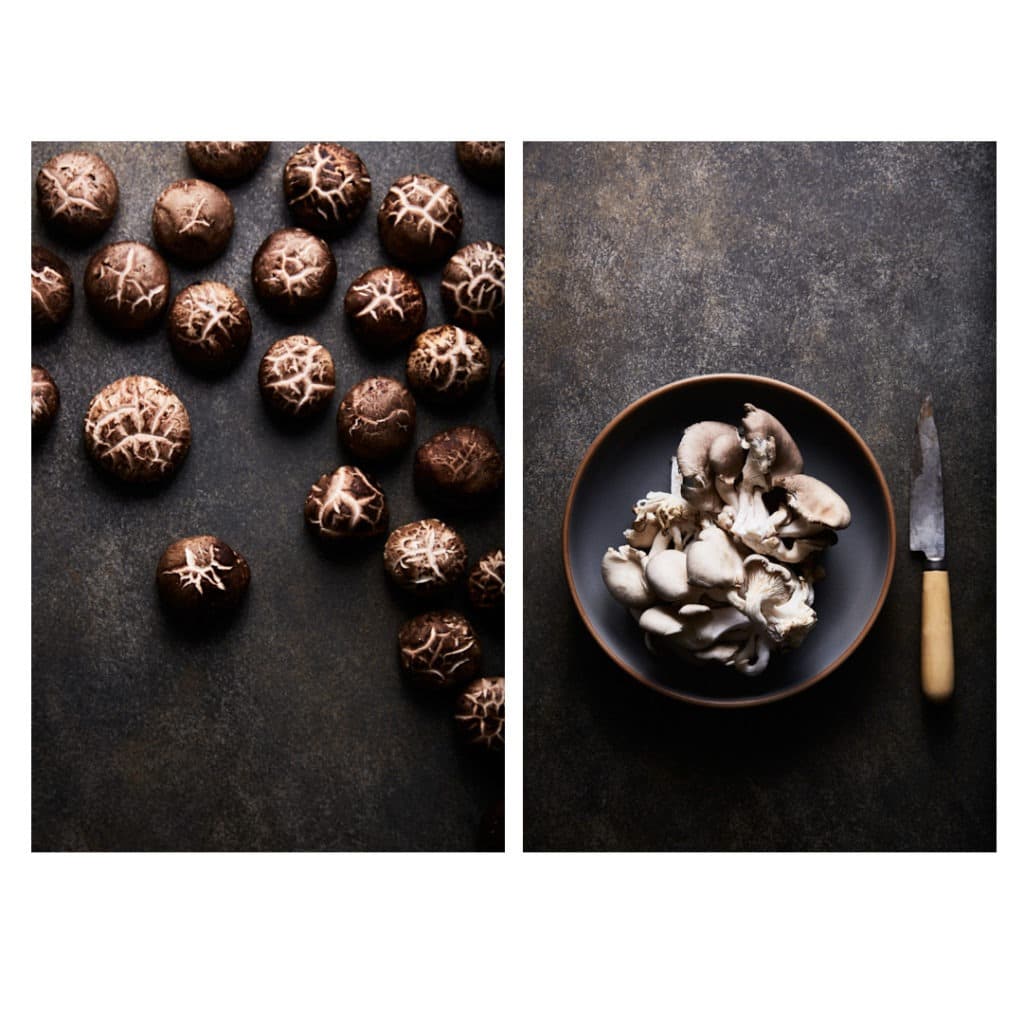
Shoot Consciously
Experimentation is an important part of finding your food photography style. In fact, you’ll probably shoot food in many different ways before you develop your stylistic fingerprint. You can develop a lot more quickly if you’re conscious and analytical about the whole process.
Not only should you analyze your work and that of other photographers, you should organize and document your inspirations, and also have a process around planning your shoots.
This can be via a folder on your computer or you can go more “analog” and keep physical documentation of these assets. I personally opt for a combination of both. I create mood boards on apps like Pinterest and Mood Board as well as links to articles online that I have found interesting. My more tangible sources are drawings, old photos and postcards, images torn out of magazines and even lines jotted down from my favourite books.
Inspiration can be found in many places. It doesn’t matter where. What matters is that you slow down, take the time to record your ideas and consciously introduce them to your work and analyze it after.
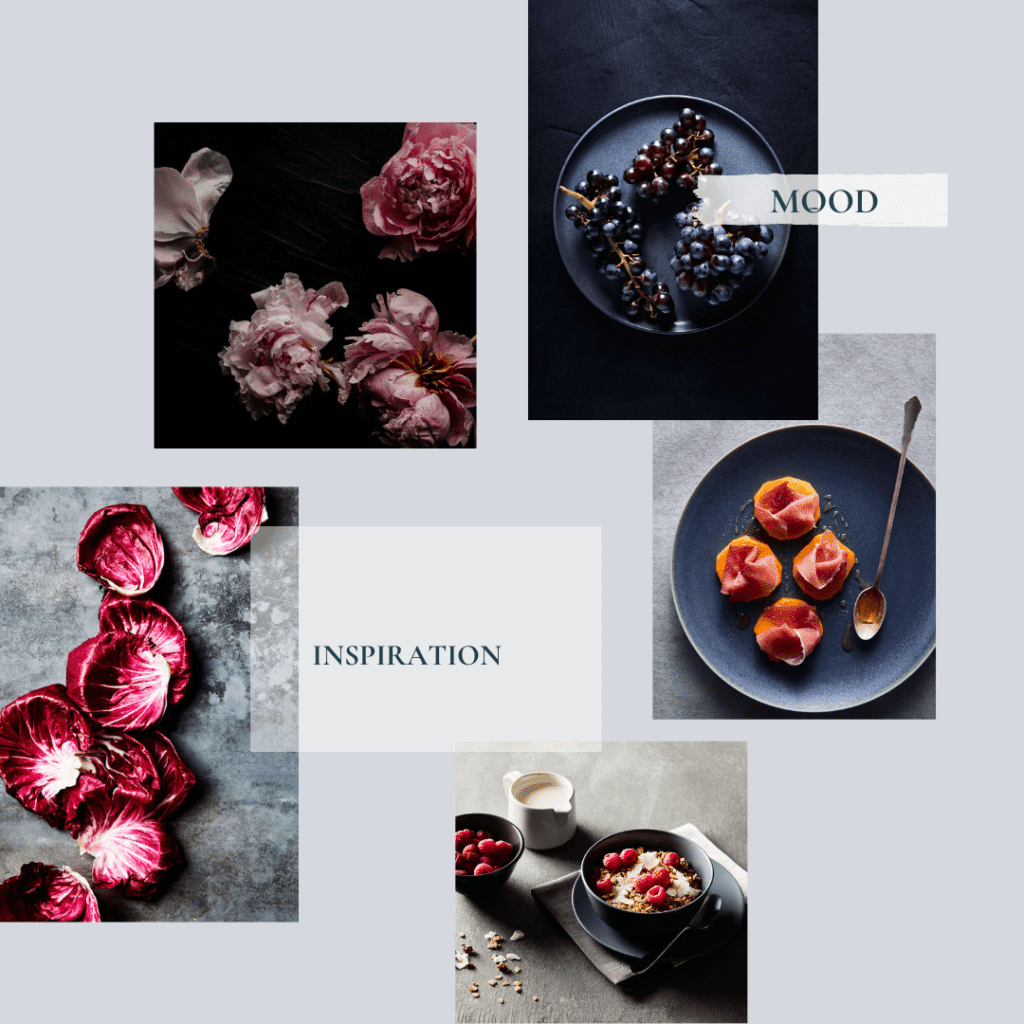
In Conclusion
Ultimately, the best way to find your food photography style is to shoot a lot. Shoot often and over time, everything you try, everything you learn and absorb from the world will find its way into your work in a style that is unmistakably yours.
6



